How To Vacuum Seal Food For Long Term Storage
You can vacuum seal foods to keep them fresh longer. Vacuum sealing food keeps out moisture and oxygen, both of which make your food go bad with time. Foods that have been properly sealed in a vacuum can last for years if kept cool and dark.
To vacuum seal your own food you will need a vacuum sealer and vacuum sealer bags. You can get the vacuum sealer bags pre-cut or on a roll. The roll is cheaper, but you will need to cut it yourself and seal off the bottom of the bag.
The rest is easy.
Vacuum Seal Fruits Vegetables and Meat
If you are sealing fruits, vegetables or meat, first Dehydrate Your Food. Depending on what you are sealing, you will need to pasteurize your food. If it is something pre-packaged such as oatmeal packets, then skip the next step.
Pasteurize Your Food
You will need to pasteurize your food before sealing it up for long term storage. This process kills any larvea, eggs or bacteria in the foods. It also eliminates any possible moisture in the food before you vacuum seal it.
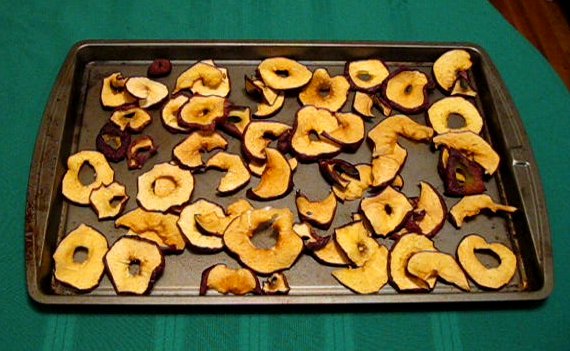
Fruit to be pasteurized
Next you will need to pre-heat your oven to 175 degrees. Place your food on a flat oven tray on a single layer. When the oven is hot, place the tray in the oven for about 15 - 20 minutes.
When the time is up, take your tray out of the oven and let it sit until the food is completely cooled off.
Vacuum Seal Your Food
Now prepare a vacuum sealer bag of the proper size. Normally, for smaller loads, a quart sized bag is fine. For full sized loads, prepare a gallon sized bag. A gallon bag is roughly about 14 inches square when flat.
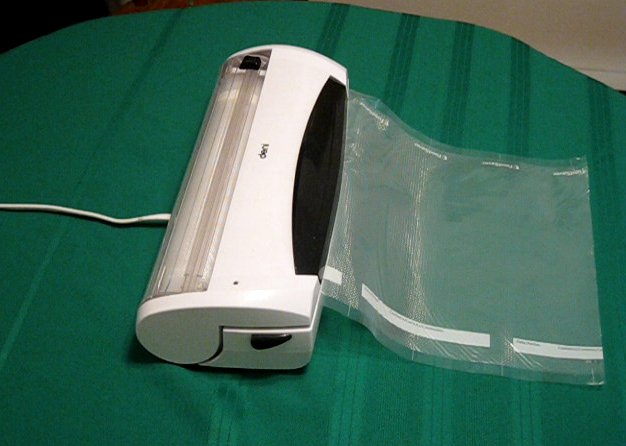
Make a vacuum sealer bag
To make your own vacuum sealer bags, cut a large enough piece of plastic off the roll and then seal off one end with your vacuum sealer machine according to its instructions. Now you have a vacuum sealer bag ready to be filled.
If you are sealing fruit or anything that may have sharp edges, line the bag with paper towels to prevent the food from poking a hole in the bag later on. Getting a hole in your sealed bag is frustrating and wasteful because either you need to repackage the food or it will go bad. You would also need to re-pasteurize the food before sealing it again.
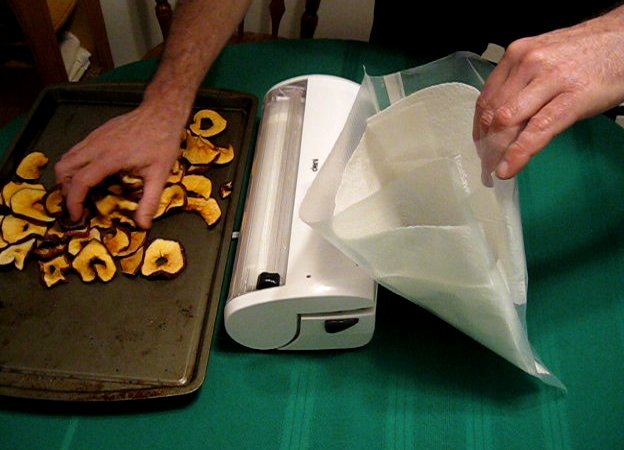
Paper towel lined vacuum sealer bag
A paper towel in the top of a vacuum sealer bag just before you seal it will also help keep dried powders from being sucked into the vacuum if you are packing flour or spices, for example.
Place a box under the vacuum sealer bag to help the machine do its job. The box should be the same level as the edge of the vacuum sealer machine so that the bag lays level with the machine. See the photo below. With this little trick, getting a full vacuum is easier. When the bag is laying down at an angle, often the bag will be bent and seal on itself, cutting off the vacuum.
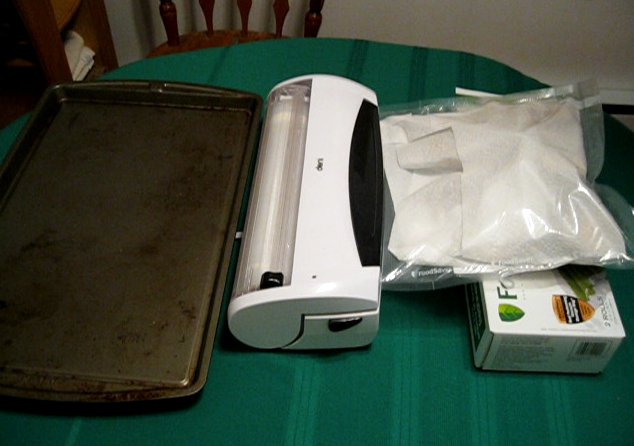
Place the bag into the vacuum sealer according to the instructions that came with the sealer. Normally, there is a line marked inside the machine showing how far to push the open end of the bag in. Place the vacuum nozzle inside the bag and press the lid of the vacuum sealer closed firmly until it locks into place.
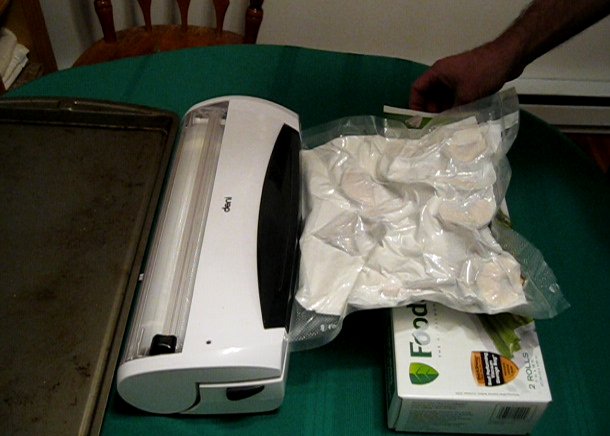
Sucking the air out of your vacuum sealer bag
The vacuum will start sucking all the air out of your bag. You can see in the photo above that the bag is crinkling up as a vacuum is being created inside. You will notice that the sound of the machine changes as the air gets sucked out of the bag. When all the air is out, you can press the middle arm down, which seals the bag closed using a heater element.
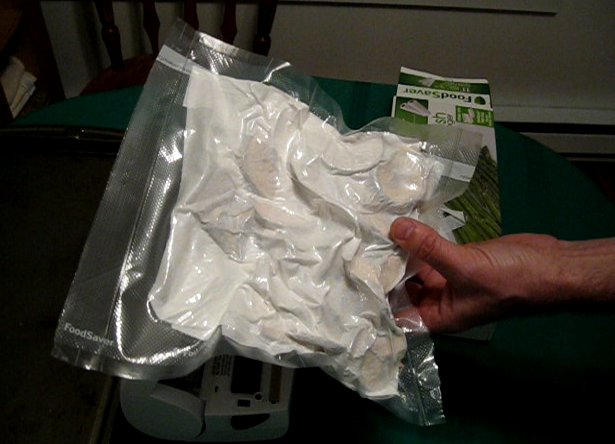
Now your food is preserved and can be stored for long term. If it is kept cool and dry, the package can be kept for a couple years.
About the Author
| Troy Reid |



